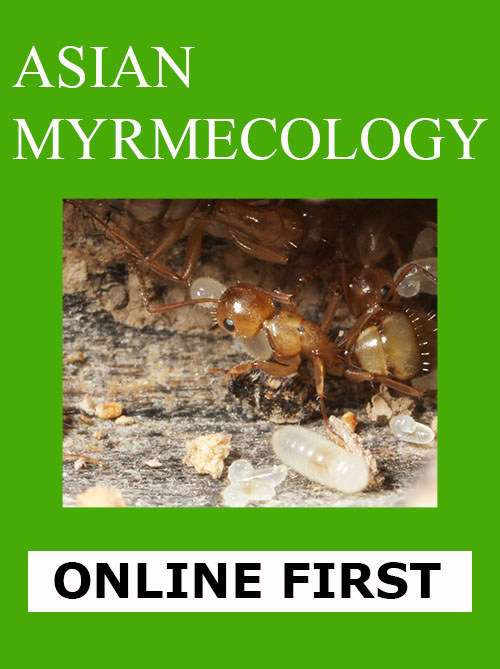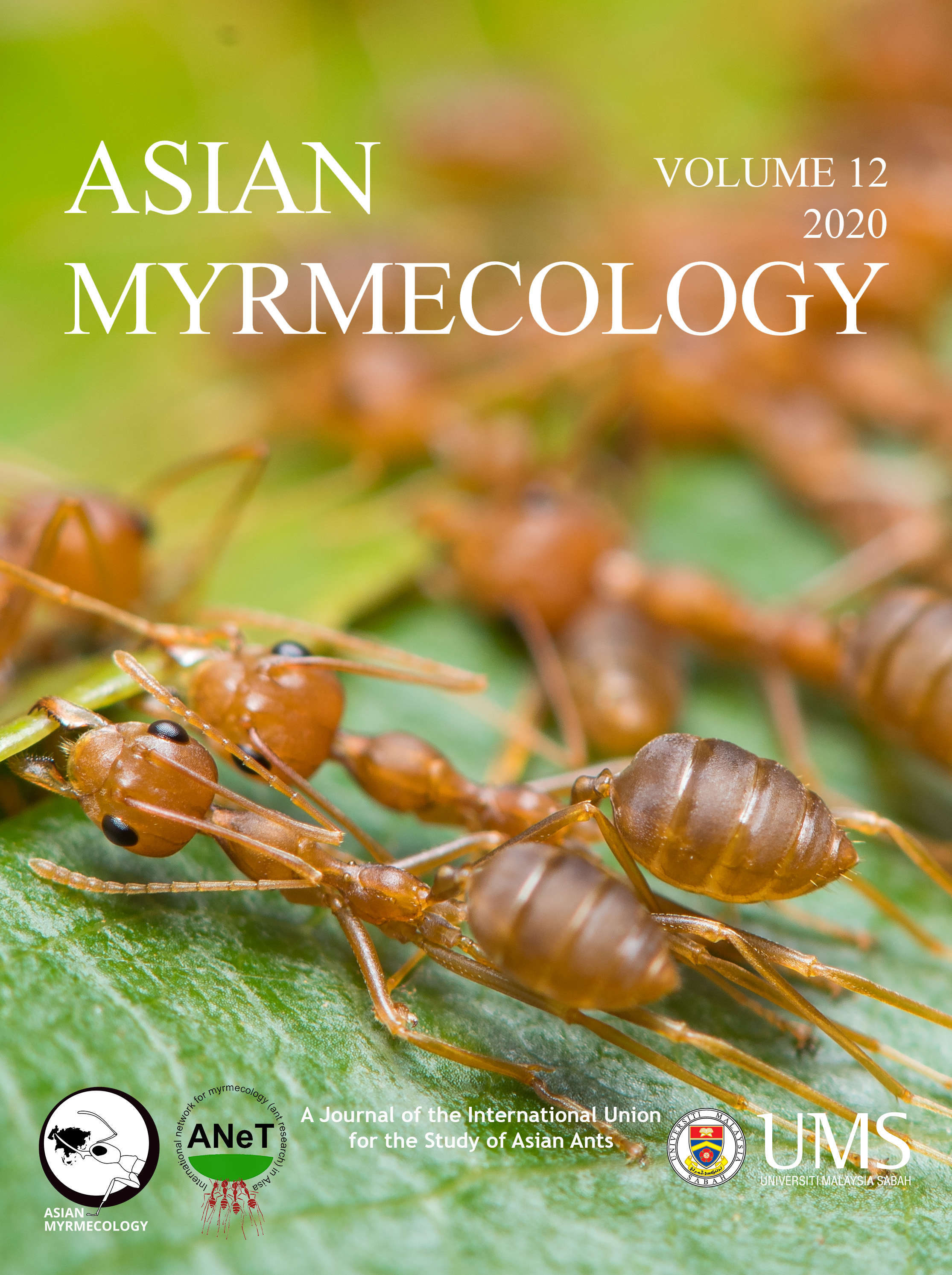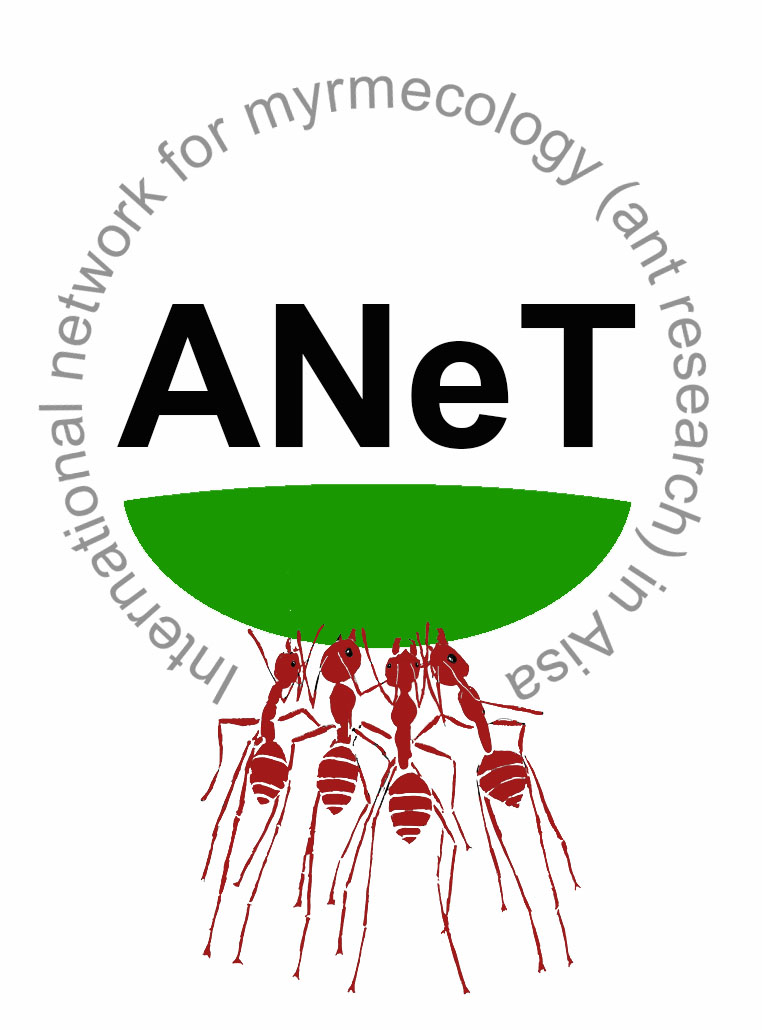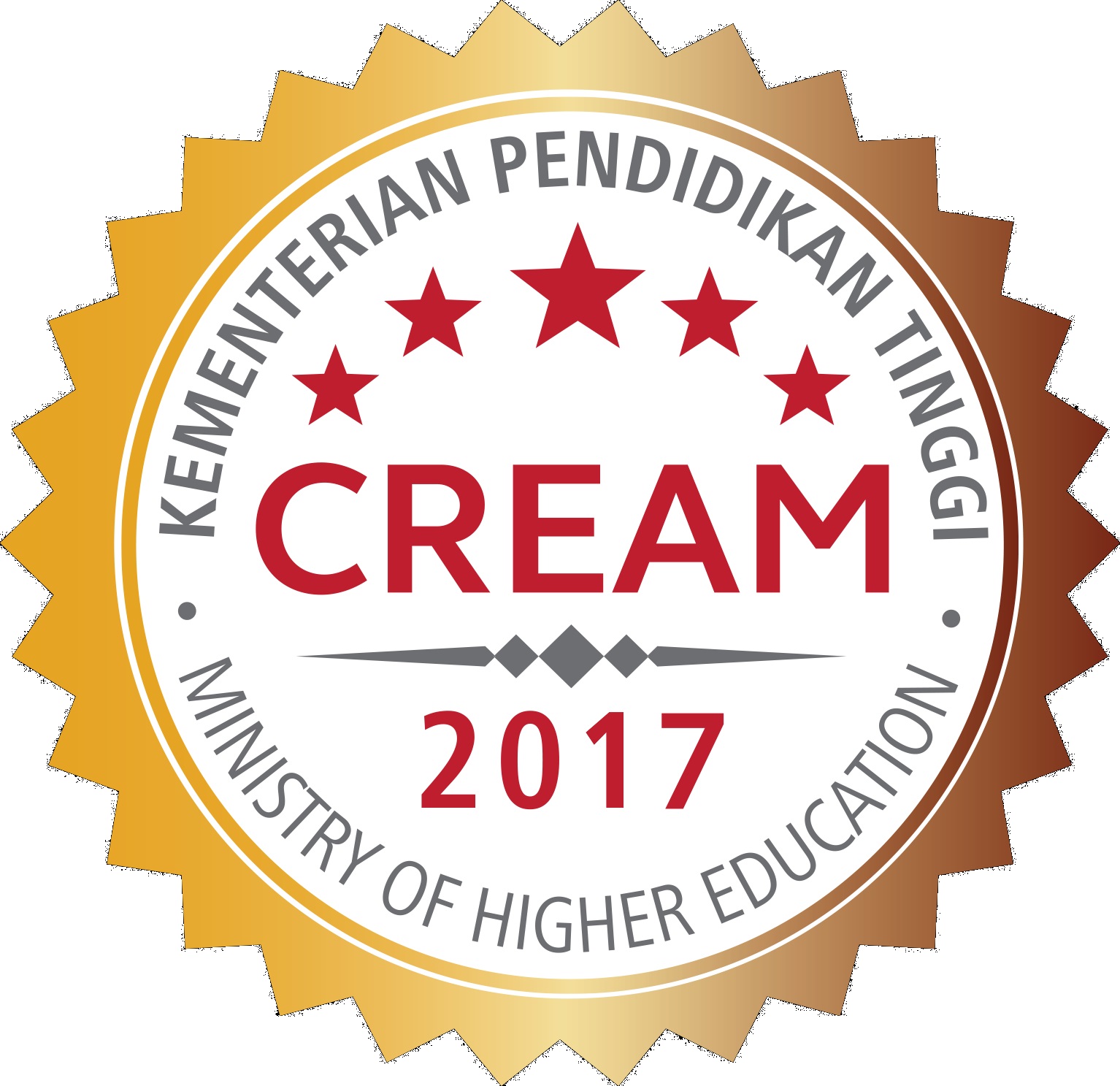ASIAN
MYRMECOLOGY
online first (online version of paper published before print issue)
DOI: 10.20362/am.014002
Asian Myrmecology 14: e014001 (1-16)
article first published online: 20/March/2021
Protection from herbivores varies among ant genera for the myrmecophilic plant Leea aculeata in Malaysian Borneo
HANNAH F. BURGER1*, KAMILA VONDRÁČKOVÁ2, MATEUSZ SKŁODOWSKI3, QIAN-QUN KOID4, DAISY H. DENT5, 6, KEVIN WALLACE7 and TOM M. FAYLE4, 8
Abstract:
Some plants use food bodies to attract ants that then provide protection from herbivory. A brief report from 1898 describes the myrmecophilic plant Leea aculeata Bl. as bearing food bodies on its young shoots, which accumulate when they are not harvested by ants. However, ant efficacy in deterring herbivores and consequences for herbivory rates remain unknown. Here we investigate (1) which ant taxa patrol these plants and whether they remove significant numbers of food bodies, (2) if these ants attack herbivores, and (3) if any anti-herbivore activity correlates negatively with herbivory. We found that a diverse community of ants patrolled young L. aculeata shoots and removed food bodies (1.2 food body per cm2 per 24 h), with food bodies accumulating when ants are experimentally excluded. Attack rates on surrogate herbivores (termite baits) differed among ant genera, with Crematogaster and Lophomyrmex being most active. Although herbivory did not differ among ant genera, herbivory was greater when ants took a longer time to detect herbivores and recruit fellow ants, providing evidence for the mutualism of L. aculeata with ants. However, the variation in protection among ant genera raises questions regarding the stability of this mutualism in the face of exploitation by ants.
Keywords:
myrmecophily; mutualism; food bodies; herbivory; myrmecophily; mutualism; food bodies; herbivory; Leea
Get PDF (2420KB):
Get Electronic Supplementary Material (899KB):
1Department of Biology, Lund University, Sölvegatan 37, 223 62 Lund, Sweden
2School of Biological Sciences, University of Aberdeen, Aberdeen AB24 3FX, UK
3Botanic Garden, Faculty of Biology, University of Warsaw, al. Ujazdowskie 4, 00-478 Warszawa, Poland
4Institute for Tropical Biology and Conservation, Universiti Malaysia Sabah, 88400 Kota Kinabalu, Malaysia
5Biological and Environmental Sciences, University of Stirling, Stirling FK9 4LA, UK
6Smithsonian Tropical Research Institute, Luis Clement Avenue, Bldg. 401 Tupper, Balboa Ancon, Panama
7Tropical Biology Association, Pembroke Street, Cambridge CB2 3QZ, UK
8Biology Centre of the Czech Academy of Sciences, Institute of Entomology, Branišovská 1160/31, 370 05 České Budějovice, Czech Republic
*Corresponding author: hannahfburger@gmail.com



